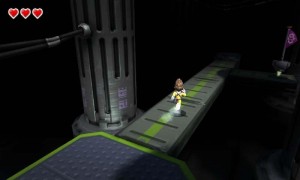News of a brand new title coming from Shigeru Miyamoto first appeared during an interview with Famitsu. Miyamoto has now mentioned the project for a second time, which is “actually getting busier lately.”
Of the new title, Miyamoto said the following in an interview with Nielsthooft:
“I happen to be working on a completely new game even now. The project is actually getting busier lately.”
You can find Miyamoto’s full interview with Nielsthooft here.
Ubisoft has finally started to give an extended look at Assassin’s Creed IV’s multiplayer elements. Just recently, the publisher held an event, which allowed members of the press to see multiplayer in action. You can find details rounded up from a VG247 report below.
– New dimension to co-op, a system for creating your own multiplayer modes called Gamelab
– Interface has been revamped to better allow in-game comms
– Over 100 staffers working on multiplayer
– Ubisoft Annecy, Bucharest, Shanghai and Kiev are all involved
– Annecy believes Wolfpack co-op upgrade is a “big step”
– Discovery mode: “linear experience” with a “story wrapper” to ease people into co-op rather than a straight training mode
– Tutorial system was wanted when Annecy saw Wolfpack was attracting people over to online play who weren’t interested in versus modes, but the introductory elements were somewhat lacking
– Discovery supports up to four players
– Work as a team to complete missions that rise in difficulty
– This helps you accrue more time, bonuses, etc.
– Unleashed: attain as high a sequence as possible by lining up multi-kills and synched kills, defending chests, eliminating disguised enemies, beating infected opponents, etc.
– Gamelab: set up multiplayer as you please
– This has over 200 customizable elements
– Team wanted to give more power to the community, please them, make them happy
– Begin with a template based on existing modes before altering what you like
– “Pistolier” mode: kill only with pistol shots, and all melee murdering has been switched off; alters deathmatch-style play completely since you must target from afar
– Share Gamelab modes with friends, favorite them, upload them to the community, get promoted by Ubisoft
– Saba Island: a pirate hideout map
– Santa Lucian: fishing village and Portobello, a “really nice place occupied by pirates”
– Frantic Gamelab mode: turns all scoring off, awarding a single point for each kill
Pick up new painting skills with Add-on Lessons for New #ArtAcademy temporarily at a 50% discount: http://t.co/tMqS69T7C4
— Nintendo UK (@NintendoUK) July 29, 2013
Art Academy: Lessons for Everyone players in Europe (where it’s known as New Art Academy) can now purchase add-on lessons at a discount. All DLC is on sale for 50% off. It isn’t clear when prices will revert back to their normal listings.
Cupra Studios is now an official Nintendo developer. Presumably, this should mean that the company can make games for both the Wii U and 3DS.
Cupra’s Oscar Yanez said the following of the news:
“This is a breakthrough in the development of our company because it allows increasing our range of possibilities to create video games based on both own and third-party licenses.”
Nintendo has re-upped the Eternal Darkness trademark in the US through the USPTO.
This isn’t the first time Nintendo has played around with GameCube game’s trademark. Extensions have been filed before, but this new trademark is noteworthy since it includes “downloadable electronic game programs” and “downloadable electronic game software.”
Nintendo hasn’t announced GameCube support for the Wii U Virtual Console, so a re-release on the eShop isn’t too likely at the moment. But maybe it will happen one day…
